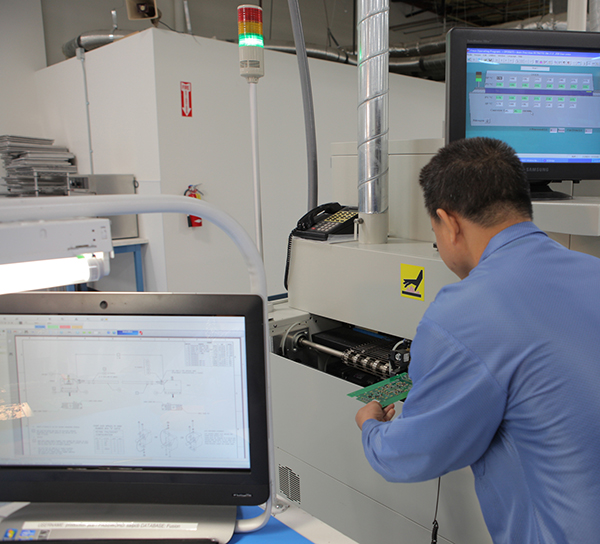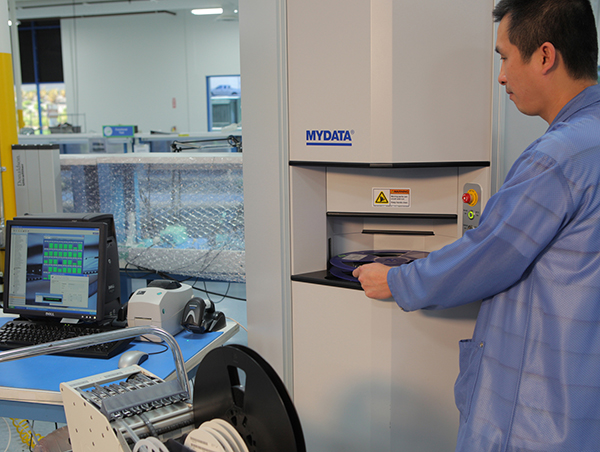‘Leaning’ the Business Model
Achieving zero variation in support infrastructure among larger and smaller contractors.
When considering high levels of automation, vertical integration and Lean philosophy, the image that comes to mind is likely that of a Tier I electronics manufacturing services (EMS) provider, not a regional EMS company. A Lean approach doesn’t limit itself to processes, however; it can also focus on the business model.
The process of outsourcing can carry many costs that aren’t measured, particularly when one considers the time potentially spent in transferring requirements, among other supply-chain management interactions. A contractor focused on transactional efficiency between itself and its customers will eliminate more layers of unnecessary transactions and cost. Some key areas where transactional efficiency can be enhanced include:
- Project transfer.
- Scheduling.
- Supply-chain management.
From an overall automation perspective, the goal has been to create a paperless factory that increases efficiency and quality, with minimal human effort. Nowhere is this more important than in the project transfer and startup phase.
Simplifying project startup. Electronics manufacturing-specific MES tools permit offline machine programming, which frees up production resources. Programming times that previously took three to five hours on the floor using production staff can now take the engineering team less than an hour.
Such tools also shorten new product introduction (NPI) time, as pick-and-place and AOI programming can be driven through the same data import and speed engineering change order (ECO) implementation. In addition to cutting time and resources, appropriate software eliminates human error that can occur when an operator is interpreting engineering drawings and bills of materials (BoMs). The result is process instructions are much more detailed and displayed via production station monitors (FIGURE 1). The digital visual aid is completely interactive. Operators can quickly reference and validate questions on-the-fly or enlarge the drawing by touching the screen displaying work instructions.

Figure 1. Process instructions are much more detailed and displayed via production station monitors. The digital visual aid is completely interactive.
Again, when automated correctly, every work order released will have the relevant standards and customer instructions attached to the file. This allows easy lookup of product details at all levels of production and ensures the entire team associated with a product has access to all information needed. This eliminates the potential for misinformation when a few expert operators disseminate information or from the inefficiency of seeking an “expert” or more detailed documentation should a question arise that isn’t addressed by a work instruction. It also reduces the learning curve associated with NPI.
However, this added level of detail does come with a tradeoff. Projects must start with a good documentation package. The EMS team and customer must ensure the incoming package includes digital drawings, a complete and accurate BoM and clean instructions on the secondary operations, or the software will flag deficiencies.
Standardization and schedule flexibility. Standardized systems and production equipment can be part of a Lean approach to increase overall scheduling flexibility and resource utilization, while also reducing non-recurring engineering (NRE) requirements. As examples, say solder paste deposition capability includes a jet printing option, eliminating the need for stencils and improving paste deposition accuracy. This can also reduce changeover time on higher mix products. Or perhaps the reflow ovens have built-in profiling software to minimize engineering time and level or expertise required to develop or change machine profiles.
Standardizing the PCBA production platform choices will simplify maintenance, minimize spare part and extra feeder stocking requirements, and increase line scheduling flexibility. A standardized approach reduces training time and knowledge base technicians must maintain compared to these requirements when multiple manufacturers are used for pick-and-place equipment. Similarly, fewer unique spare parts are required. Most important, production can be more easily shifted among lines to accommodate variation in demand when there is minimal variance in line configuration.
SAI’s automation strategy not only focuses on reducing changeover time driven by machine programming and tooling changeover, it also minimizes material sorting and transport activity. This material handling and storage strategy improves overall material handling efficiency and reduces defect opportunities present in storage areas that are not environmentally controlled through the use of humidity-controlled component storage towers. The integrated towers provide line-side stocking and superior protection for component reels or packages used in high-mix projects that might not be consumed in a single production run (FIGURE 2). The towers link to the MRP system, enabling real-time tracking of inventory consumption plus support for device history recordkeeping and traceability, while providing 100% inventory management.

Figure 2. Environmentally-controlled component towers provide line-side stocking and 100% inventory management.
While this systems strategy helps facilitate schedule flexibility by reducing the time and complexity of line changeovers, the MES also helps minimize defect opportunities by ensuring process consistency. On-the-fly changes are not allowed in any part of the process. This ensures an efficient, yet disciplined, process flow.
Process configuration and shop floor layout is locked down by engineers. Work-in-process (WIP) can’t be moved out-of-order and must travel by process configuration to be released to the next station. If a prior stage hasn’t been satisfied, the next station is locked out. In addition to preventing the defects that can occur if a well-designed process isn’t followed, this provides a strong check and balance for mission-critical products with requirements tied to AS9100 or ISO 13485 requirements.
The engineering team has also found that while the shop floor control system was designed for PCB manufacturing, with slight adaptations its tools can also be used to support work instruction and process development for cable assembly and box build, maximizing efficiencies across all work flows.
Vertical integration as a tool for transactional efficiency. SAI’s approach to vertical integration marries a broad range of cable and harness and PCB assembly capabilities with box-build work cells. This three-pronged approach eliminates the lead-time associated with custom cables built via subcontractors, plus helps support the “Made in USA” requirements associated with some mission-critical projects. More important, by co-locating these operations within the facility, communications among team members are streamlined.
A vertically integrated business model that includes printed circuit board assemblies, cables and harnesses, and box-build assembly increases responsiveness and schedule flexibility, while eliminating the double markup that can occur when subcontractors are involved.
There is no question using Lean philosophy to minimize variation in production processes while increasing throughput reduces hidden costs. However, production is only one part of the EMS equation, and customers have come to expect zero variation in support infrastructure among larger and smaller contractors. At the regional level, a comprehensive systems and automation strategy can pay for itself by reducing overhead staff requirements, eliminating errors commonly found in more manual processes, reducing the time required to launch new projects or changeover lines, and eliminating defect opportunities caused by process variation. Customer transactional costs can also be reduced through more efficient documentation transfers and delivery of superior quality product.
The results speak for themselves. Since implementing this system, SAI won CIRCUITS ASSEMBLY’s Overall Service Excellence Award in its size category, and is seeing continuing growth in revenue, higher level assembly service use and the geographic breadth of its customer base.
is sales and marketing manager at Spectrum Assembly (saicorp.com); alexandra@saicorp.com.
Press Releases
- Altus Reports Growing Demand for Guidance on Convection Reflow Oven Specification
- Coherix Opens New Adhesive-Dispensing Vision Center in Europe
- Pan Pacific Strategic Electronics Symposium Program Finalized
- The Most Critical 2 Inches in SMT Manufacturing – When a Splice Fails, the Line Fails, Full Stop. Throughput and Yield Depend on One Overlooked Moment







